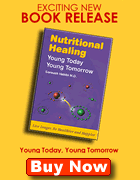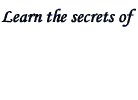 |
Vitamin D is not a true vitamin as it can be partly made in the body within the skin due to the effect of ultra-violet light in the sun. Other sources are egg yolk, butter, sprouted seeds, milk and fish liver oils such as cod, tuna, herring and halibut. It has two main types, D2- ergocalciferol, which is the synthetic form, and D3-cholecalciferol or the natural form.
Cholecalciferol is converted in the liver to 25-OH-D3 the more circulating form and then in the kidneys it is converted to 1,25-(OH) 2- D3 the most active form.
Functions:
- It helps calcium absorption
- It is necessary for bone and teeth growth.
- It assists in the assimilation of phosphorus, which plays a role in bone formation and mineralisation.
- It is involved in the transport of calcium through the mucus membranes.
|
 |
Deficiency
Vitamin D deficiency may cause rickets in children and osteomalacia in adults. Rickets is characterized by softening of bones, fragile bones, bowing of the legs, restlessness, flabby muscles and being prone to infections especially chest infection.
Osteomalacia is softening of the bones in adults due to loss of calcium from the bones causing bowing of the long bones.
Dosage: RDA recommendation is 200- 400IU per day. 40 IU=1mcg
EDR (Effective Daily Requirement) is 400-2800 IU per day.
Safety: Vitamin D could cause toxicity in infants at 40,000 IU per day within 1-4 months. In adults toxicity could result if 100,000 IU is taken for several months.
For more detailed information and specific recommendations, please [click here] to become a member of DrHabibi.com
|
 |




